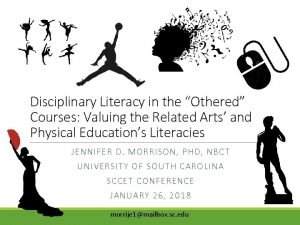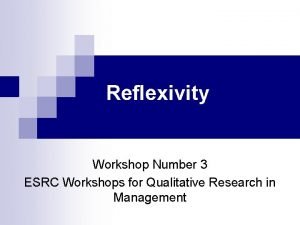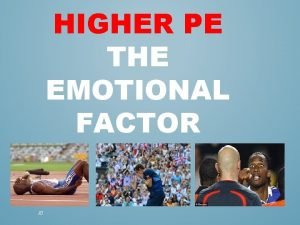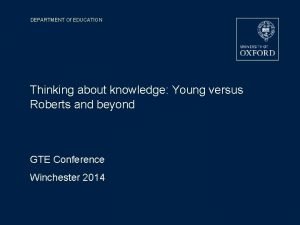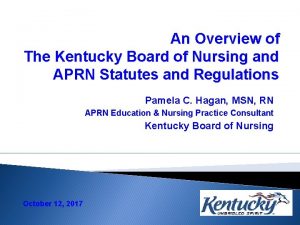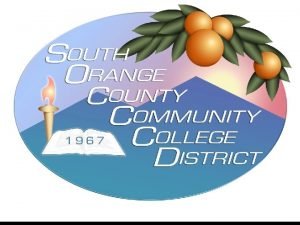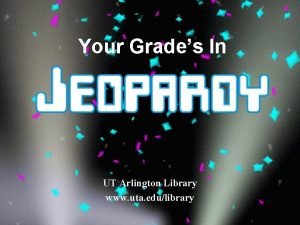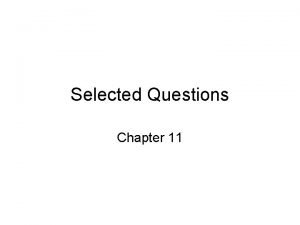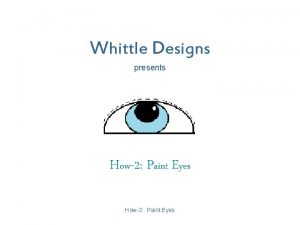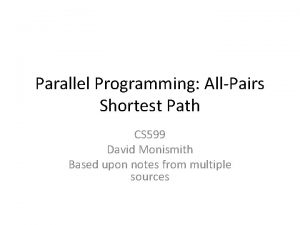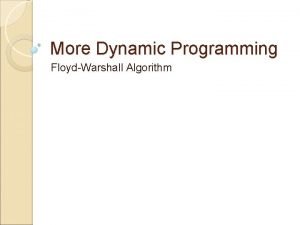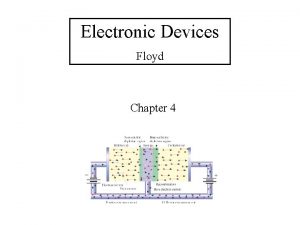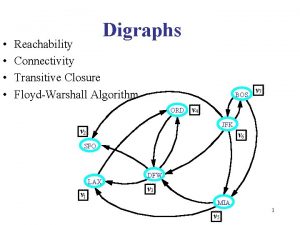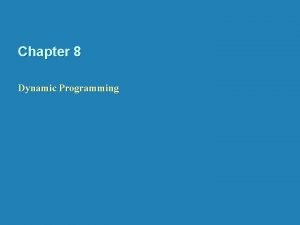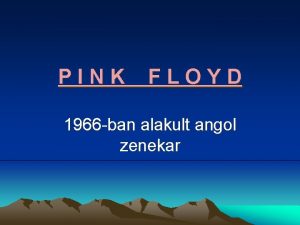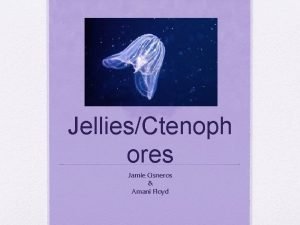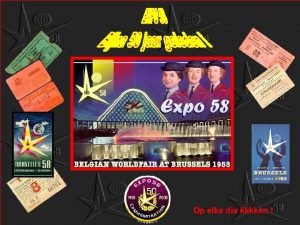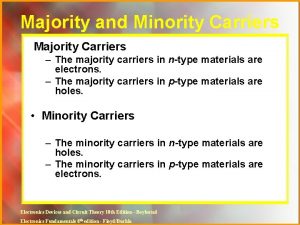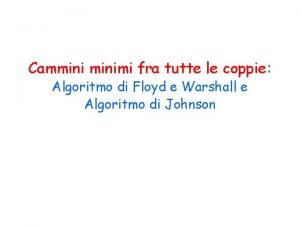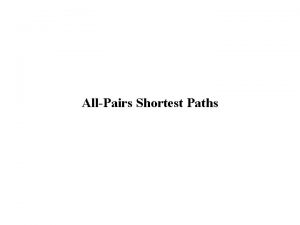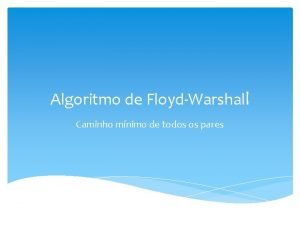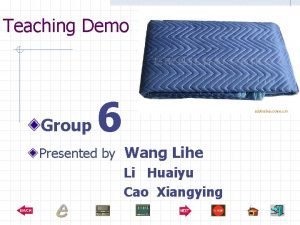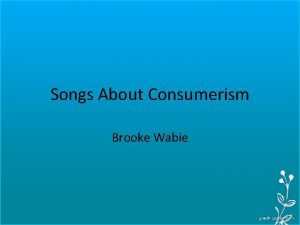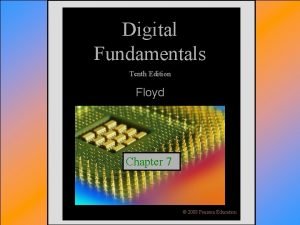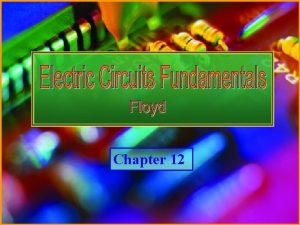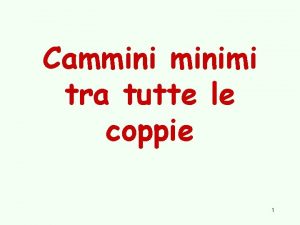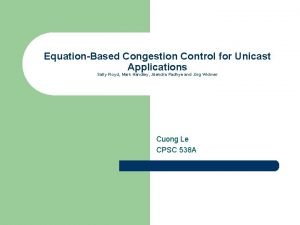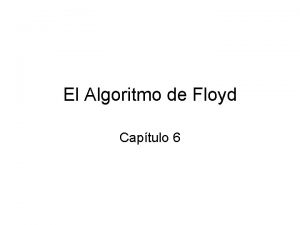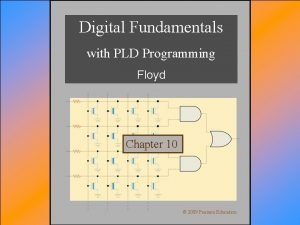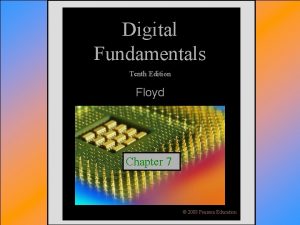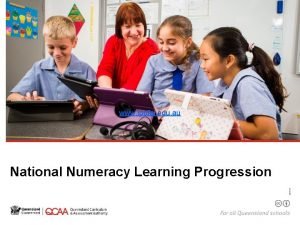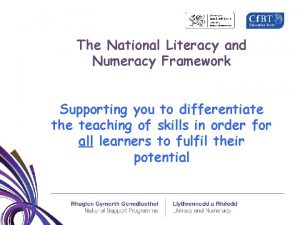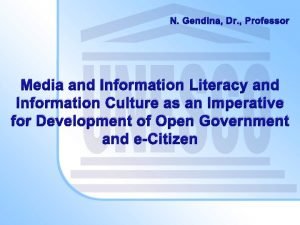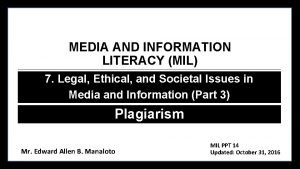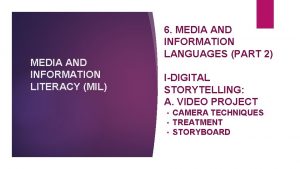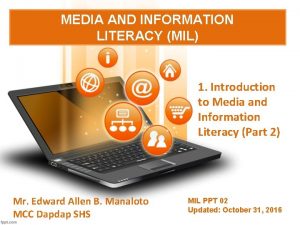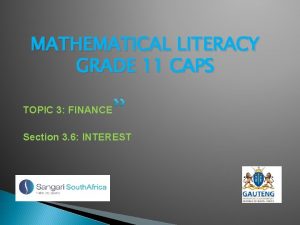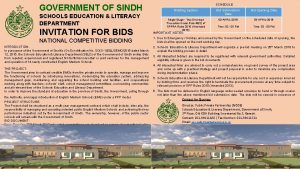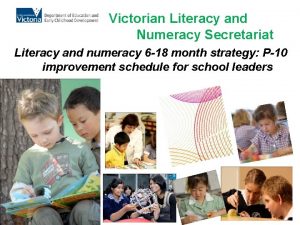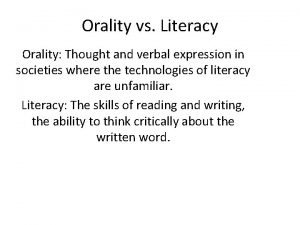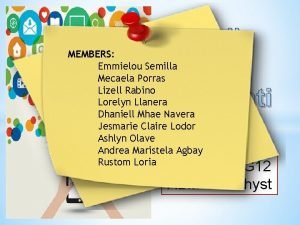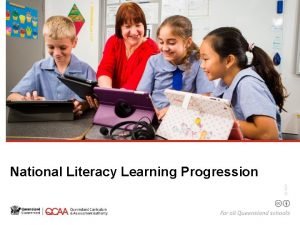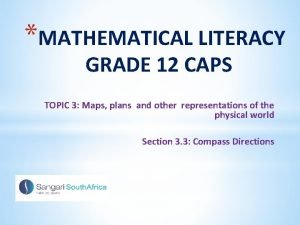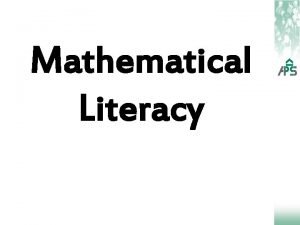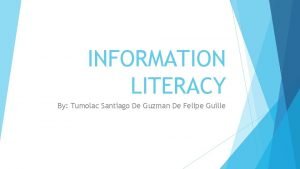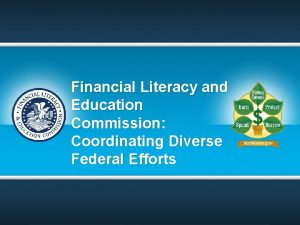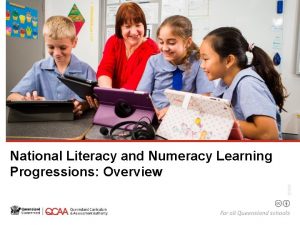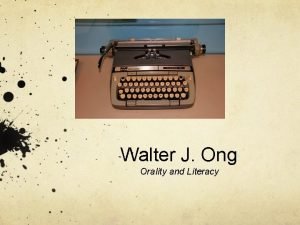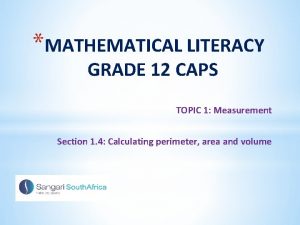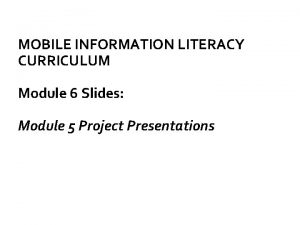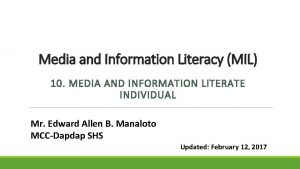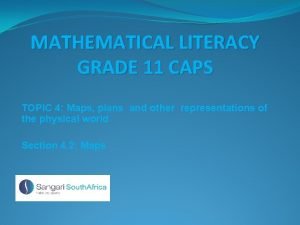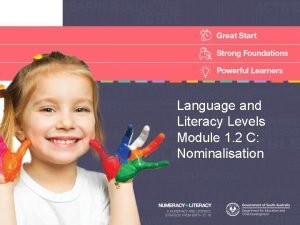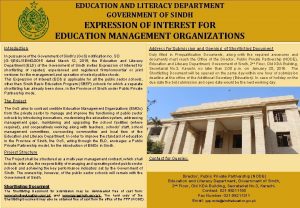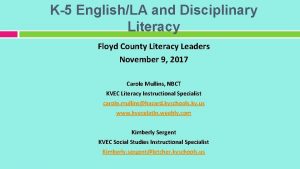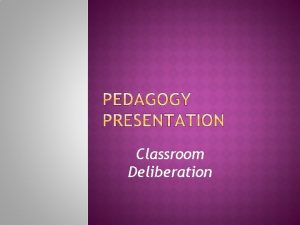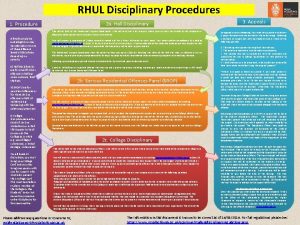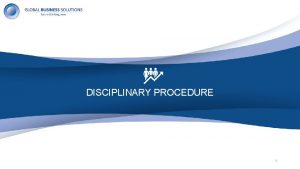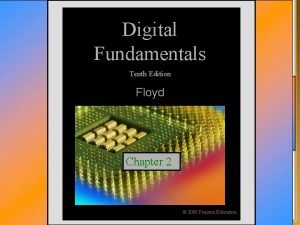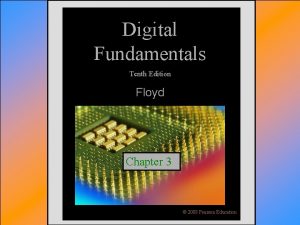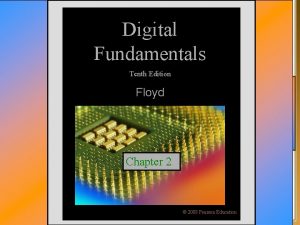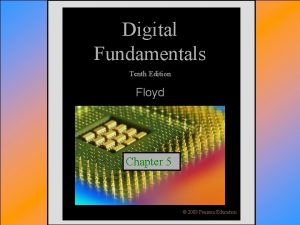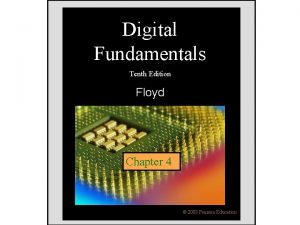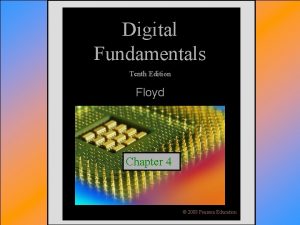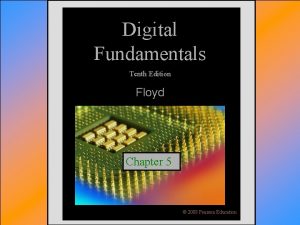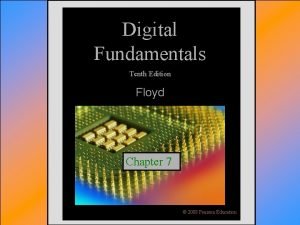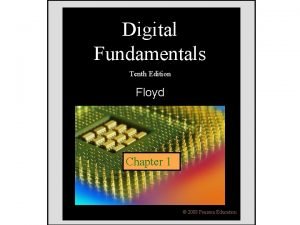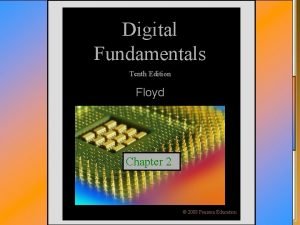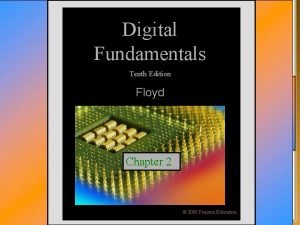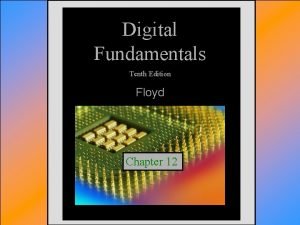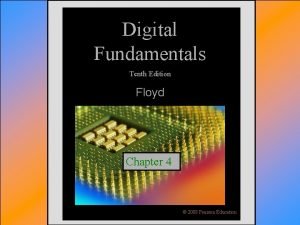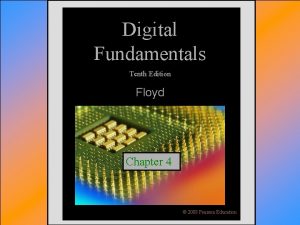6 12 EnglishLA and Disciplinary Literacy Floyd County







































































- Slides: 71

6 -12 English/LA and Disciplinary Literacy Floyd County Literacy Leaders November 27, 2017 Carole Mullins, NBCT KVEC Literacy Instructional Specialist carole. mullins@hazard. kyschools. ky. us www. kvecelatln. weebly. com Kimberly Sergent KVEC Social Studies Instructional Specialist Kimberly. sergent@letcher. kyschools. us

“He who dares to teach, must never cease to learn. ” ~John Cotton Dana

017 October 24, 2 Step 1: Read the article and identify 2 -3 “AHAs”. Step 2: Record your thoughts/comments about each aha on the paper covering your table. Sign your name. Step 3: Walk around the table(s) and read your colleague’s thoughts/comments. Step 4: Respond to the thoughts/comment when appropriate. Step 5: Return to your seat for discussion.

What is meant by College and Career Readiness (CCR) Anchor Standards? 4 …the acquisition of the knowledge and skills a student needs to enroll and succeed in credit-bearing, first-year courses at a postsecondary institution (such as a two- or four-year college, trade school, or technical school) without the need for remediation. (ACT) The standards were built on this vision for every single student who graduates from high school.

A Few Major Problems Identified… Significant numbers of students read so poorly that they are unlikely to have access to full participation in American society Significant numbers of students who are deemed literate are not sufficiently literate to succeed in college or career According to NAEP, there have been clear reading improvements among fourth-graders since 1992. And yet, middle school students are reading no better than then and high school students appear to have fallen Teachers have found ways of getting info to students without texts (e. g. , Powerpoint, video) and omitting reading of text But, ACT research has found that the amount of text reading between 7 th and 12 th grades was the best preparation of later success

Elevating Literacy And Literacy Instruction Up Through The Grade Levels ACT found that state standards did not take specific Reading standards through high school. The Kentucky Academic Standards (KAS) for English/LA changed this… Ø Reading Foundational Skills for K-5 Ø Literacy Skills for K-5 content area classes embedded Ø Grades 6 -12: 10 Reading/Writing Standards specific to History/Social Studies; Science and Technical Subjects

“The Standards” • What Does It Mean to be a Literate Person in the 21 st Century? • Public School is an adventure. • If you are going to use a map, make sure it’s correct! Kentucky’s Academic Standards for English Language Arts and Literacy in History/Social Studies, Science, and Technical Subjects

College and Career Readiness Standards English Language Arts Reading (20) 1)Informational (10) 2)Literary (10) Literacy in History/Social Studies, Science, and Technical Subjects Reading (10) Writing (10) Speaking & Listening (6) Language (6) Same Skills, Different Approach !

“Read like a detective, write like a reporter. ”

Reading Standard #1 CCR Anchor Standard #1 (Literature and Informational) Read closely to determine what the text says explicitly and to make logical inferences from it; cite specific textual evidence when writing or speaking to support conclusions drawn from the text. K-12 Progressions

Deconstructed Reading Informational Standard 1: 7 th Grade

Distribution of Literary and Informational Passages by Grade in the NAEP Reading Framework GRADE LITERARY INFORMATION 4 50% 8 45% 55% 12 30% 70% The Standards aim to align instruction with this framework so that many more students than at present can meet the requirements of college and career readiness. ELA CCSS Page 5

Literary vs Informational CCR Reading Standard 3: Analyze how and why individuals, events, and ideas develop and interact over the course of a text. Reading Standards for Literature Reading Standards for Informational Text Grade 7: Analyze how particular elements of a story or drama interact (e. g. , how setting shapes the characters or plot) Grade 7: Analyze the interactions between individuals, events, and ideas in a text (e. g. , how ideas influence individuals or events, or how individuals influence ideas or events). Grades 11 -12: Evaluate various explanations for characters’ actions or for events and determine which explanation best accords with textual evidence, acknowledging where the text leaves matters uncertain. Grades 11 -12: Analyze a complex set of ideas or sequence of events and explain how specific individuals, ideas, or events interact and develop over the course of the text.

Specific Elementary Reading Issues… “Sounding the Alarm on Kentucky’s Academic Test Scores” Hal Heiner, Secretary KY Education & Workforce Development Cabinet http: //kentuckytoday. com/stories/sounding-the-alarm-on-kentuckys-academic-test-scores, 9455 “The Prichard Statement on 2017 Academic Test Scores” http: //prichblogspot. com/2017/09/prichard-statement-on-2017 -results. html

Writing Standard #1 CCR Anchor Standard #1 Write arguments to support claims in an analysis of substantive topics or texts, using valid reasoning and relevant and sufficient evidence. K-12 Progressions

Deconstructed Writing Standard 1: 7 th Grade Kentucky Academic Standards with Targets

Distribution of Communicative Purposes by Grade in the NAEP Writing Framework GRADE TO PERSUADE TO EXPLAIN Opinion/Argumentation Info. /Exp. TO CONVEY EXPERIENCE Narrative 4 30% 35% 8 35% 30% 12 40% 20% It follows that writing assessments aligned with the Standards should adhere to the distribution of writing purposes across grades outlined by NAEP. ELA CCSS Page 5

Social Studies Technical Health Fitness Humanities Mathematics Bio Science Phy Science History Literary Fiction Each content or subject discipline has: § its own unique knowledge core and … § its own ways of inquiring, investigating, reasoning, representing, and questioning. Disciplinary Literacy: KAS Literacy Standards Intermediate Literacy Basic Literacy Doug Buehl, Developing Readers in the Academic Disciplines, 2011, p. 13

Overview of the Reading Standards for History/Social Studies � Key Ideas and Detail: Cite specific textual evidence to support analysis of primary and secondary sources � Craft and Structure: Analyze, evaluate, and differentiate primary and secondary sources � Integration of Knowledge and Ideas: Integrate information from diverse primary and secondary sources into a coherent understanding of an idea or event

Overview of the Reading Standards for Science & Technical Subjects 6 -12 � Key Ideas and Detail: Cite specific textual evidence to support analysis of scientific and technical texts � Craft and Structure: Analyze the scope and purpose of an experiment or explanation and determine which issues remain unresolved or uncertain � Integration of Knowledge and Ideas: Synthesize information in different formats by representing complex information in a text in graphical form (e. g. , a table or chart) or translating a graphic or equation into words

Including Tier Words in Instruction The standards suggest that it's important to target specific instruction on Tier 2 and Tier 3 vocabulary words to help students develop deep understanding that cannot be acquired through independent reading. Since Tier 3 words are typically targeted in content specific instruction, it's particularly important and challenging to identify and target Tier 2 words, since they appear across all disciplines. The task at hand, then, appears to be identifying the Tier 2 words and finding effective instructional strategies to support acquisition of those words.

What About Disciplinary Writing? Using writing to learn provides students with frequent opportunities to write expressively in order to wrestle with classroom content. Writing is a method of demonstrating understanding of content area knowledge. Writing should be utilized in all content areas, not just English language arts classrooms.

Discipline-specific Considerations History Primary source documents CTE Technical manuals Sourcing Fostering collaboration Contextualizing Resolving problems

Discipline-specific Considerations Math Language-rich, multi-step problems Science Unique text features Concepts represented in multiple ways Information conveyed through visual representations Use of language to defend, explain, or provide evidence of reasonableness Acquisition of technical vocabulary

Common Core You Tube Videos Produced by James B. Hunt, Jr. Institute for Educational Leadership and Policy And the Council of Chief State School Officers (CCSSO) Example: Writing to Inform and Make Arguments (3: 36) http: //www. youtube. com/watch? v=Jt_2 j. I 010 WU&feature=relate d

Standards do … Standards do not … Establish what students need to learn. Dictate how teachers should teach. Instead, schools and teachers will decide how best to help students reach the standards. Attempt to focus on what Describe all that can or should be taught. A is most essential. great deal is left to the discretion of teachers and curriculum developers. Set grade-level standards. Define the intervention methods or materials necessary to support students who are below or above grade-level expectations.

What Really Matters… “What really matters, in terms of developing readers and writers, is the quality of classroom instruction. ” ---Richard Allington

Common Core Shifts 1. 2. 3. 4. 5. 6. Increase Reading of Informational Text Complexity Academic Vocabulary Text-based Answers Increase Writing from Sources Literacy Instruction in all Content Areas

Shifts Mean a Change in Practice! From… Content knowledge primarily from teacher-led lecture To… Content knowledge comes from a balance of reading, writing lecture, and hands-on experience Quick Explanation of the Shifts by Kate Gerson, Senior Regent Research Fellow for Common Core with the Regents Research Fund (And, Former Secondary Teacher) https: //www. engageny. org/resource/quick-explanation-of-the-shifts-by-kate-gerson 29

High Level Summary of the “Biggest” Shifts 1. Building knowledge through content-rich nonfiction and informational texts 2. Reading, writing and speaking grounded in evidence from text 3. Regular practice with complex text and its academic vocabulary

Comprehension and Collaboration SL. CCR. 1 the

10. Read and comprehend complex literary and informational texts independently and proficiently.

The Crisis of Text Complexity � Complexity of texts students are expected to read is way below what is required to achieve college and career readiness: High school textbooks have declined in all subject areas over several decades Average length of sentences in K-8 textbooks has declined from 20 to 14 words Vocabulary demands have declined, e. g. , 8 th grade textbooks = former 5 th grade texts; 12 th grade anthologies = former 7 th grade texts � Complexity of college and careers texts has remained steady or increased, resulting in a huge gap (350 L)

What does it mean to you? Anchor Standard R. CCR. 10 Read and comprehend complex literary and informational texts independently and proficiently. 34

What Makes Text Complex? Educational Leadership, March 2012 The Challenge of Challenging Text Timothy Shanahan, Douglas Fisher and Nancy Frey Vocabulary: Knowledge of word meaning Sentence Structure: How the words operate together Coherence: How particular words, ideas, and sentences in text connect with one another Organization: The patterns authors use to communicate complex information Background Knowledge: The reader’s prior knowledge

Text Complexity is Defined in the Standards by: ati alit Qu e tiv tita an Qu structure, language conventionality and clarity, and knowledge demands often best measured by an attentive human reader. 2. Quantitative measures – readability and other scores of text complexity often best measured by computer software. 3. Reader and Task considerations – background knowledge of reader, motivation, interests, and complexity generated by tasks assigned often best made by educators employing their professional judgment. ve 1. Qualitative measures – levels of meaning, Reader and Task

Ripe Figs by Kate Chopin As a small group, read “Ripe Figs” and answer the three questions provided….

Discussion �On a scale of 1 to 10, how would you rate the overall complexity of this text? �What features of this text support your rating of its complexity? � At what grade level might this text be appropriate for instruction? Why?

Determining Text Complexity e lita tiv ati ve Qu a tit an 39 Qu 1. Determine the quantitative measures of the text. 2. Analyze the qualitative measures of the text. 3. Reflect upon the reader and task considerations. 4. Recommend placement in the appropriate text complexity band. Page 31, Elementary Page 57, Secondary Reader and Task

Step 1: Quantitative Measures tat ali Qu ve Reader and Task 40 � Word frequency � Word difficulty � Sentence length � Text cohesion ati tit an Qu ive Measures such as: � Word length

This Chart Demonstrates the Lexile Ranges for Text Complexity Grade Bands CCSS Appendix Pg. 8

Step 2: Qualitative Measures ve tat ali Qu ati tit an Qu ive Measures such as: � Levels of meaning Reader and Task 42 � Levels of purpose � Structure � Organization � Language conventionality � Language clarity � Prior knowledge demands

Qualitative Measures Resource

Step 3: Reader and Task Considerations such as: � Motivation ati � Purpose for reading Reader and Task � Complexity of task assigned regarding text � Complexity of questions asked regarding text ali Qu ve 44 tit tat ive Knowledge and experience an Qu �

Matching Reader, Task, and Text Utilize your professional judgement and instructional goals for each specific text to design lessons based on your knowledge of students' individual needs.

Step 4: Recommended Placement ali tat iv ati ve Qu tit an Qu e 46 Reader and Task After reflecting upon all three legs of the text complexity model we can make a final recommendation of placement within a text and begin to document our thinking for future reference. Additional Resource: “What Makes This Text Complex? ” achievethecore. org

BRAIN BREAK!!! 10 Minutes

Text Types and Purposes Production and Distribution of Writing Research to Build and Present Knowledge • Write arguments to support claims • Write informative/explanatory texts to examine and convey complex ideas • Write narratives to develop real or imagined experience • Produce clear and coherent writing • Planning, revising, editing, rewriting • Use technology to produce, publish, interact and collaborate • Conduct short/sustained research projects • Gather information from multiple sources • Draw evidence from literary/informational texts Range of Writing: Write routinely for range of tasks, purposes, and audiences (10) 48

One BIG Change in the Writing Standards: Building Student’s Argumentative Skills from Elementary to Secondary From…To… Stating opinions Supportin g with evidence What differentiates argument from opinion? The use of textual evidence! Supporting with textual evidence

A Vertical Leap .

Argumentative Writing… Informational/Explanatory Writing… • uses FACTS and OPINIONS to convince the • uses FACTS to explain to an audience a reader that the author is right given topic/issue • includes a type of thesis; the difference is • will include a THESIS STATEMENT; the that thesis of argumentative writing is author will explain thesis to the reader called a CLAIM. in the body paragraphs • seeks to persuade by convincing the reader to perform an action or convince the reader of their point of view. • does not allow for your own view about the topic/issue • the student’s job is to give reasons for • the student’s job is to EXPLAIN. That is it! believing or doing something with supporting evidence. Narrative Writing is Embedded into Both Adapted from: https: //prezi. com/f 9 xymf 6 sfrki/informative-vs-argumentative/


http: //www. smekenseducation. com/Argumentative-v-Persuasive-Writ. html

Subtle, but Significant Differences… VS

Informative/Explanatory Writing CCR Writing Anchor Standard #2 Write informative/explanatory texts to examine and convey complex ideas and information clearly and accurately through the effective selection, organization, and analysis of content. SKILLS: SELECTING, ORGANIZING, and ANALYZING IMPORTANT QUALITIES: ACCURACY AND CLARITY

Informative/Explanatory writing seeks to accurately convey information Purposes are: o to increase readers’ knowledge of a subject o to help readers better understand a procedure or process o to provide readers with an enhanced comprehension of a concept

Informational Text Features Print Features � Table of Contents � Index Organizational Aids � Bold Print � Italics � Bullets Graphic Aids � Diagrams � Graphs � Maps Illustrations � Photos � Magnification Informational Text Organizational Structures Definition Description Procedural-Sequential Synthesis Analysis Comparison Cause/Effect

How does Informative/Explanatory writing differ from Argumentative writing? Compare these two writing prompts: v Was Alexander the Great truly great? v How did Alexander the Great hellenize the Middle East?

Was it Destiny to move West? Visual Literacy Strategy: 2 1 Crop It! What does the imagery say about westward expansion? What type of transportation was used to settle the West? What were the challenges to westward expansion? What technology played a role in westward expansion? 3 4

Was it Destiny to move West? www. c 3 teachers. org Inquiry Design Model Based on a Summative Performance Task (usually argumentation) Question is ‘staged’ 3 -4 supporting questions, dissected through primary sources ‘Daily’ formative performance task Each table will complete their formative performance task, reading quickly through the resources. How will these three questions with resources prepare the students to address the question, Was it Destiny to move West?

Literacy Design Collaborative (LDC) Rubrics Create a Free Account! www. ldc. org Join Core Tools

Narrative Writing CCR Writing Anchor Standard #3 Write narratives to develop real or imagined experiences or events using effective technique, well-chosen details, and wellstructured event sequences. “Good writing is seldom purely one form. This is especially true with the integration of narrative into other forms. Informational articles often contain a narrative. Opinion and arguments may contain a personal story to emphasize why certain evidence is more credible, important, or believable. ” Author Unknown

Kentucky Academic Standards: Narrative Writing 6 th Introduction establishes context, shifting time frames, precise vocabulary Conclusion reflections on experiences or events 7 th 8 th Shifting time frames and relationships among those events 9 -10 th Multiple points of views, characters reflect on events, telling details 11 -12 th Introduction emphasizes significance of events, control of tone

Appendices Appendix A: Supplementar y Materials and Glossary www. corestandards. org Appendix B: Text Exemplars and Sample Performance Tasks Appendix C: Annotated Writing Samples at Various Grade Levels

New Resource: Available for All Grade Levels THE COMMON CORE COMPANION: The Standards Decoded for Grades 6 -8 and 9 -12 What They Say – What they Mean – How to Teach Them Jim Burke: Corwin Literacy

English II End-Of-Course: Field Test Core Components: Critical Analysis of literary and informational texts Thoughtful critique and response to the thoughts of others Construction of arguments based upon evidence Careful consideration of relevant evidence Three “Reasoning” Clusters: Analyzing Literature Engaging in Argument Integrating Multiple Perspectives

Where does On-Demand Writing Appear in the Standards? Range of Writing: Standard #10: Write routinely over extended time frames (time for research, reflection, and revision) and shorter time frames (a single sitting or a day or two) for a range of tasks, purposes, and audiences.

On-Demand Writing Assessment Purposes To provide students the opportunity to demonstrate independently the communication skills they have developed through instruction To reflect authentic reading and writing —understanding the role reading plays in the development of writing without testing reading ability To use source material to promote authentic content in writing To reflect the type of writing required for college/job readiness, reflected in the CCSS (KCAS) “Students mastering Standard 10 are able to communicate clearly and will be prepared for Kentucky’s writing assessment. ” KDE Three Modes of Writing Guidelines: Page 2

Resource: My Website Carole Mullins, NBCT KVEC Literacy Instructional Specialist carole. mullins@hazard. kyschools. us www. kvecelatln. weebly. com

Resource: Icurio. com

Claims Driving Design: ELA/Literacy Students are on-track or ready for college and careers Students read and comprehend a range of sufficiently complex texts independently Reading Literature Reading Informational Text Vocabulary Interpretation and Use Students write effectively when using and/or analyzing sources. Written Expression Conventions and Knowledge of Language Students build and present knowledge through research and the integratio n, compariso n, and synthesis of ideas.
 Disciplinary literacy in physical education
Disciplinary literacy in physical education Eds
Eds Reflexivity definition
Reflexivity definition Brianmac poms
Brianmac poms Disciplinary knowledge
Disciplinary knowledge Disciplinary curriculum
Disciplinary curriculum Capa ns kentucky
Capa ns kentucky Frisk letter of reprimand
Frisk letter of reprimand University of texas at arlington library
University of texas at arlington library Multi-cultural literacy
Multi-cultural literacy Difference between media literacy and technology literacy
Difference between media literacy and technology literacy People as media and people in media
People as media and people in media Cyber literacy and digital literacy
Cyber literacy and digital literacy The blanket floyd dell
The blanket floyd dell The blanket by floyd dell questions and answers
The blanket by floyd dell questions and answers Jeff wittel eye
Jeff wittel eye Dijkstra's shortest path algorithm pseudocode
Dijkstra's shortest path algorithm pseudocode Transitive closure in discrete mathematics
Transitive closure in discrete mathematics Floyd
Floyd Strongly connected
Strongly connected Floyd digital fundamentals 10th edition pdf
Floyd digital fundamentals 10th edition pdf Robot coin collection dynamic programming
Robot coin collection dynamic programming Floyd angol együttes
Floyd angol együttes Digital fundamentals 10th edition
Digital fundamentals 10th edition Floyd allport
Floyd allport Amani floyd
Amani floyd Pink floyd scaruffi
Pink floyd scaruffi Belgische powerpoint presentatie pink floyd
Belgische powerpoint presentatie pink floyd Electronic devices floyd 10th edition
Electronic devices floyd 10th edition Digital fundamentals floyd 10th edition
Digital fundamentals floyd 10th edition Floyd algoritmo
Floyd algoritmo All-pairs shortest paths
All-pairs shortest paths Algoritmo de floyd-warshall
Algoritmo de floyd-warshall The blanket by floyd dell characters
The blanket by floyd dell characters Consumerism songs
Consumerism songs Floyd
Floyd Electric circuits fundamentals floyd
Electric circuits fundamentals floyd Floyd warshall algoritmo
Floyd warshall algoritmo Sally floyd
Sally floyd Algoritmo de floyd
Algoritmo de floyd Floyd
Floyd Floyd
Floyd What is the challenges of media and information
What is the challenges of media and information National numeracy progressions
National numeracy progressions Lnf framework
Lnf framework Mind map about media and information literacy
Mind map about media and information literacy Plagiarism in media and information literacy
Plagiarism in media and information literacy Performance task for media and information literacy
Performance task for media and information literacy Introduction to media and information literacy
Introduction to media and information literacy Mathematical literacy floor plans
Mathematical literacy floor plans Mathematical literacy grade 11
Mathematical literacy grade 11 Mathematical literacy grade 11 simple and compound interest
Mathematical literacy grade 11 simple and compound interest Literacy strengths and weaknesses
Literacy strengths and weaknesses School education and literacy department
School education and literacy department How formal education differs from als
How formal education differs from als Literacy and numeracy secretariat
Literacy and numeracy secretariat Orality examples
Orality examples Ohp in media and information literacy
Ohp in media and information literacy Literacy learning progression
Literacy learning progression Scottish survey of literacy and numeracy
Scottish survey of literacy and numeracy Maps and plans maths lit grade 12
Maps and plans maths lit grade 12 Difference between mathematics and mathematical literacy
Difference between mathematics and mathematical literacy Disaster scenario media and information literacy
Disaster scenario media and information literacy Financial literacy and education commission
Financial literacy and education commission Literacy and numeracy progressions
Literacy and numeracy progressions Walter j ong orality and literacy
Walter j ong orality and literacy Measurement maths literacy grade 12
Measurement maths literacy grade 12 Media and information literacy module 6
Media and information literacy module 6 Graphic organizer about media and information literacy
Graphic organizer about media and information literacy Elevation map maths lit
Elevation map maths lit Language and literacy levels
Language and literacy levels Education and literacy department
Education and literacy department
